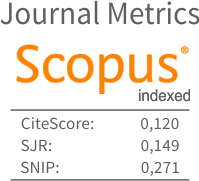The Discourse of Motherhood in Celebrity Mommy Blogs
DOI:
https://doi.org/10.21664/2238-8869.2017v6i4.p111-127Abstract
This article seeks to understand how the construction of the discursive ethos of motherhood takes place in celebrity mommy blogs, analyzing the construction of the ethos through lexicon and argumentation. It uses the theoretical frameworks of Celebrity Studies, Media and Childhood, and Discourse Analysis in the French tradition. We used Content Analysis to analyze the themes that occur in these platforms, that were then selected down to three text on the topic of work-family conciliation, on which we applied the main methodology of the article - Discourse Analysis. We analyse the difference in the representation of celebrity blogs and mommy blogs who became celebrities; the ethos that mothers are trying to portray; and how the children assist in construction that.References
Aristóteles 1998. Retórica, Imprensa Nacional/Casa da Moeda, Lisboa. Original: V a.C.
Baccega MA 1988. Comunicação e linguagem: discurso e ciência. Moderna, São Paulo.
Benveniste É 1995. Problemas de Linguística Geral I, Pontes, Campinas, SP.
Benveniste É 1989. Problemas de Linguística Geral II, Pontes, Campinas, SP.
Blum-Ross A & Livingstone S. in press. Sharenting: parent blogging and the boundaries of the digital self. Popular Communication.
Dyer R 2005. Heavenly Bodies: film stars and society, Routledge, Londres, 212 pp.
Evans J & Hesmondhalgh D (Eds.) 2005. Understanding Media: Inside Celebrity. Open University Press, Berkshire, 191 pp.
Fiorin JL 2002. As Astúcias da enunciação: as categorias de pessoa, espaço e tempo. Ática, São Paulo.
Jorge A & Marôpo L 2017. Born to be famous? Children of celebrities and their rights in the media. In: J. O’Connor, & J. Mercer (Ed.), Childhood & Celebrity, Routledge, London, p. 28-40.
Kerbrat-Orecchioni C 1993. La enunciación: de la subjetividade en el language. 2.ed. Edicial, Buenos Aires.
Koch IGV 2000. Argumentação e linguagem. 6.ed. Cortez, São Paulo.
Lopez LK 2009. The radical act of 'mommy blogging': redefining motherhood through the blogosphere. New Media & Society, 11(5):729-747.
Maingueneau D & Charaudeau P 2004. Dicionário de análise do discurso. Contexto, São Paulo.
McNamara K 2009. Publicising private lives: celebrities, image control and the reconfiguration of public space. Social & Cultural Geography, 10(1):9–23.
Orlandi EP 2002. Análise do discurso: princípios e procedimentos. 4.ed. Pontes, Campinas, SP.
Rojek C 2001. Celebrity. Reaktion Books, Londres.
Santana Neto JA 2005. Processos argumentativos: estudo retórico de textos didáticos. Quarteto, Salvador.
Senft TM 2013. Microcelebrity and the Branded Self. In J Hartley, J Burgess & A Bruns (Eds.). A Companion to New Media Dynamics, Wiley-Blackwell, Chichester, p. 346–354.
Turner G 2004, Understanding Celebrity. Londres, Sage, 174 pp.
Turner G, Bonner F, Marshall PD 2000. Fame Games: the production of celebrity in Australia. Cambridge University Press, Australia.
Ducrot O 1987. O dizer e o dito, Pontes,Campinas, SP.
Gamson J 1994. Claims to Fame: celebrity in contemporary America, University of California Press, Berkeley, LA; Londres.
Breton P 1999. A argumentação na comunicação, Editora da Universidade de Santa Catarina Bauru, SP.
Mussalim F 2001. Análise do Discurso. In F Mussalim & AC Bentes (Orgs.). Introdução à linguística: domínio e fronteira. vol. 2. Cortez, São Paulo, p. 101-142.
Maingueneau D 2002. Análise de textos de comunicação. 2.ed. Cortez, São Paulo.
Alberoni F 2006. The “powerless elite”: theory and sociological research on the phenomenon of the stars. In PD Marshall (Ed.) The Celebrity Culture Reader, Routledge Nova Iorque, Londres, p. 108‐123. Orig.: 1962.
Marwick AE & Boyd D 2010. I tweet honestly, I tweet passionately: Twitter users, context collapse, and the imagined audience. New Media & Society, 13(1):114-133.
Marôpo L & Jorge A 2014. At the heart of celebrity: celebrities’ children and their rights in the media. Communication & Society, 27(4):17-34.
Mortensen M & Jerslev A 2014. Taking the extra out of the extraordinary: Paparazzi photography as an online celebrity news genre. International Journal of Cultural Studies, 17(6):619-636.
Borda J 2015. Cultivating Community Within the Commercial Marketplace: Blurred Boundaries in the ‘Mommy’ Blogosphere. In AT Demo, JL Borda, CH Krolokke (Eds.). The Motherhood Business: consumption, communication, and privilege, University of Alabama Press, Tuscaloosa, p. 121-150.
Jerslev A 2016. In The Time of the Microcelebrity: Celebrification and the YouTuber Zoella. International Journal of Communication, 10(19):5233–5251.
Steinberg S 2017. Sharenting: Children's Privacy in the Age of Social Media. Emory Law Journal; University of Florida Levin College of Law Research Paper no. 16-41.
Downloads
Published
How to Cite
Issue
Section
License
This journal offers immediate free access to its content, following the principle that providing free scientific knowledge to the public, we provides greater global democratization of knowledge.
As of the publication in the journal the authors have copyright and publication rights of their articles without restrictions.
The Revista Fronteiras: Journal of Social, Technological and Environmental Science follows the legal precepts of the Creative Commons - Attribution-NonCommercial-ShareAlike 4.0 International. 


